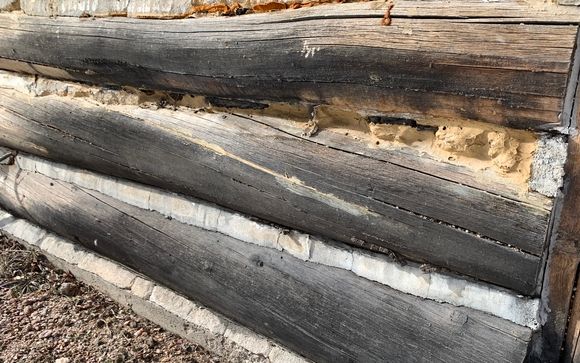
Identifying and understanding log rot is essential to log home ownership. So, what are some of the warning signs to look for in your routine home inspections? Below are some examples of log rot and what to look for when it comes to maintaining your log cabin.
- Cracks in your logs. Unless you are using reclaimed wood, which will have cracks from the start, cracks in your logs are signs that they are gradually weakening.
- Fading, peeling topcoat and stain open your logs to water and insect damage.
- Sawdust, cobwebs, and bite marks are evident in the wood. This tells you that it is being eaten or chewed by animals or bugs. You will need to execute proper pest control around the house.
- Already visible wood rot. Soft wood or hollow sounds when tapped on lightly with a hammer.
- Mold and mildew are present. This signals that your wood could be damaged by water. Unless you implement proper repair or replacement, it will contaminate the logs and spread quickly. It’s worth noting that rot, or decay, is different than mold. Mold and mildew affect the surface and can be removed with proper cleaners. Rot on the other hand grows within the wood causing it to lose structural integrity and strength. However, mold and mildew are a sign of potential water problems. It can also make the wood more susceptible to the bacteria that causes rot so it should be removed.
- Your stairs and floors are no longer level with each other. This is due to wood shifting, which is a structural issue, or wood warping, which may be caused by external factors that you will need to address.
Best ways to prevent log rot from happening
- Controlling water by design is a great way to prevent wood rot. Large overhangs and porches all around will keep water off your logs. If the water cannot get to your logs, rot will not be an issue. Gutters also do a great job keeping water from running off your roof, landing on a deck or patio and bouncing back up on the logs.
- All wood on your log home should be at least 24 inches off the ground. Make sure you design your foundation with enough height to make this a reality. Keep shrubs at a good distance from the home, 30-36in is typically recommended
- Treat your logs properly and regularly to ensure a protective seal is maintained. On this note, the product you use is essential. Use a quality product like those offered from Sashco.
- Another source of log rot is from water getting in around windows and doors as well as at corners and log butt ends. No matter the species of log your home was built from, you can rest assured that as temperatures rise and fall your logs will move. The backer rod allows the caulk to expand and contract without tearing.
- Logs are natural products. They shrink and check over time. When upward facing checks appear you should treat them to keep water out. The best way to deal with checks is to seal them.
Luckily, log rot is one of the few log home restoration projects that can be done year round. If your home has log rot and you would like to get a quote on repairs, call the professionals at 888 Log Guys, today!








